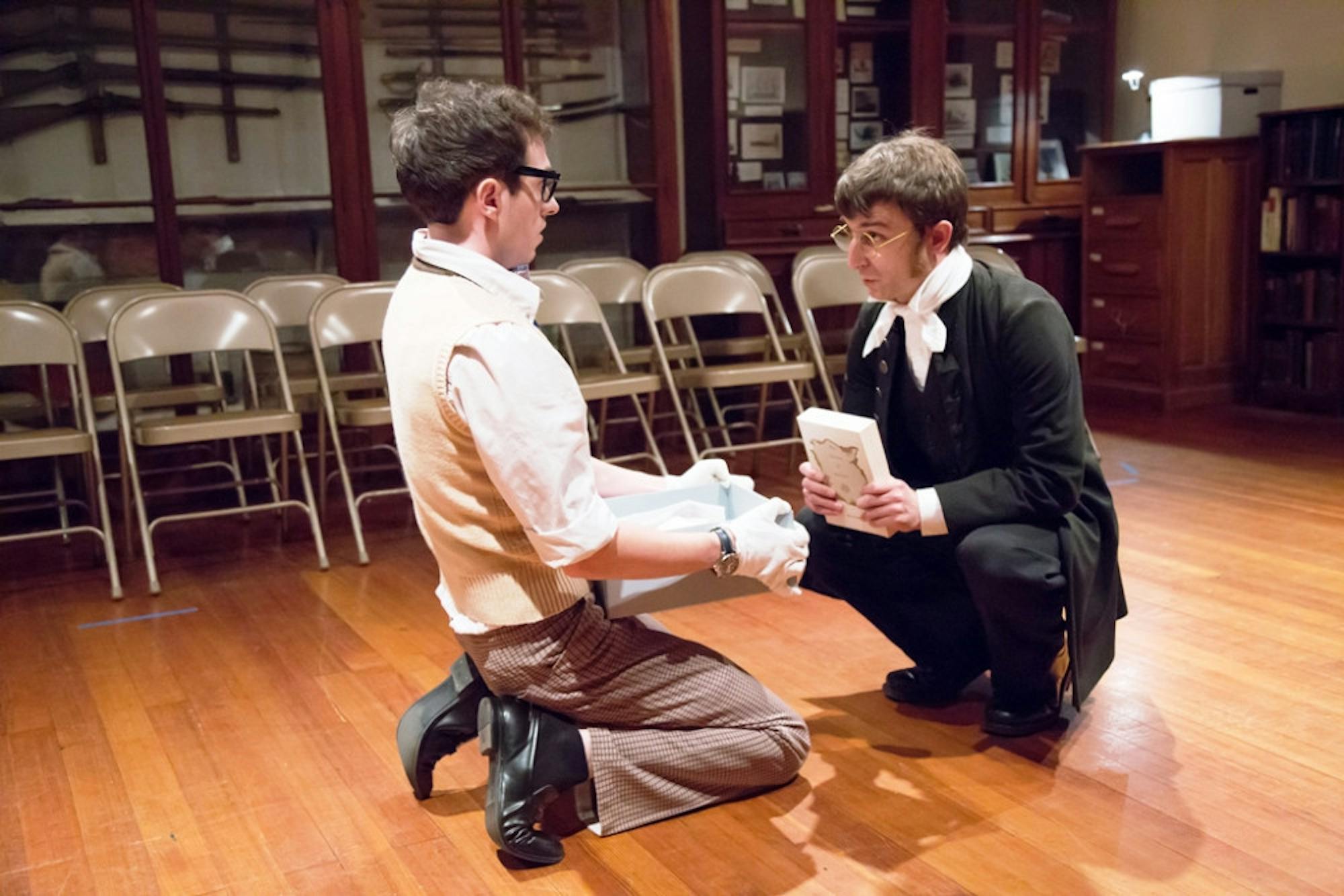To celebrate the community's rich history, the Medford Historical Society and Museum is sponsoring the production of a new play which offers an in-depth reflection on the town’s growth and development since its founding in 1630. In addition to the University's connection to Medford, the play -- entitled “Letters to Medford: A Play about the Future, According to the Past" -- has strong ties to Tufts. Alumna Kyna Hamill adapted the story for the stage, and the production's stage manager is current Tufts sophomore Rachel Canowitz. “Letters to Medford” was inspired by a letter written by Medford historian Reverend Charles Brooks in his 1855 work “The History of the Town of Medford, Middlesex County, Massachusetts 1630-1855.”This and other historical letters, combined with a few contributions from modern Medford students -- addressed to citizens of the 2200s -- shaped "Letters to Medford." The Daily held an exclusive interview with playwright Kyna Hamill at the Medford Historical Society and Museum building in Medford.
The Tufts Daily: When was this place built?
Kyna Hamill:This building [is from] 1916, though the society [was founded in] 1896. The building is the previous home of Lydia Mariah Child -- she’s most well-known … for her poem “Over the River and through the Woods” (1844)... I don’t believe we’ve ever had a play [at the house] before, so it’ll be interesting to see how it works out.
TD: Can you tell me a little about the plot of the play?
KH:There are three historical characters, or ghosts -- very charming ghosts -- and three contemporary characters. Two are teenagers who are sort of the voice of those youthful, angst-filled letters, and one character who is an archivist, and his job is to protect everything ... So it’s really a story about the way that history is considered over time: the way they think about history, the way we think about history and the way the future will think about history … The students teach the ghosts something, and the ghosts teach the students something.
TD: Will you be using any props from the museum itself?
KH:Yes … Of course, we can’t use the manuscript letters, so I’ve made a bunch of letters … but we are using [one] artifact which is a central part of the second half of the show, which is a painting of Lydia Maria Child. A part of the plot is that [Adam] is trying to protect everything so much because, in the 1950s especially, Medford was kind of destroying everything … people just didn’t know how to take care of things. That’s when they were tearing down a lot of the beautiful 19th century buildings.
TD: Can you talk a little more about the original letter that inspired it all?
KH:Yes! It’s such a positive letter. [Reverend Brooks] wrote a history of the town in 1835; he starts from the settlement in 1630 [and] it goes all the way up to his present, which is 1855 -- our past -- and then at the very end, he tacks on this letter to the future … It’s just this wonderfully positive and charming letter. Kind of thinking that, you know, "I know you’ll still be reading Shakespeare and I know you’ll still be reading Homer.” He was a minister, so it talks a lot about Christianity and hoping everybody is still going to church and everybody is still virtuous, but he kind of has this wonderfully naive idea of air travel and sea travel and how we’ll be moving through the air at a faster pace. It’s this wonderfully naive idea of the future. It was interesting -- when we had students write about the future, it’s just total anxiety ... It’s really interesting to see the difference between his hope and the contemporary letters.
TD: Where was this letter found?
KH: It’s published, but it’s kind of a dense history and it’s not the most fun thing to read, so we just kind of forgot that it existed. It’s there in the book, but it’s only two pages and it’s tucked right in the middle … so it’s always been there, but we kind of just found it again.
TD: Can you remind me of the author’s name?
KH: It’s Reverend Charles Brooks … the Brooks family was a big family in west Medford, so much so that they almost had the town [name] changed to “Brooks” … Actually, right now there’s a talk going on at one of the old Brooks Estates ... about how the Brooks family paid for a lot of the art at the Museum of Fine Arts. They commissioned that beautiful Cyrus Dallin sculpture of the Native American [“Appeal to the Great Spirit” (1909)] out front.
TD: I didn’t realize that Medford was so involved in the arts.
KH: Yeah. In the 19th century [Medford] was a big abolitionist community, [and] it was a very protestant community … A couple of great figures like George Luther Stearns, who was one of the secret six -- who were the six men who secretly paid for the raid on Harpers Ferry that John Brown did -- he lived in Medford … Medford is just full of great stories, great history.






